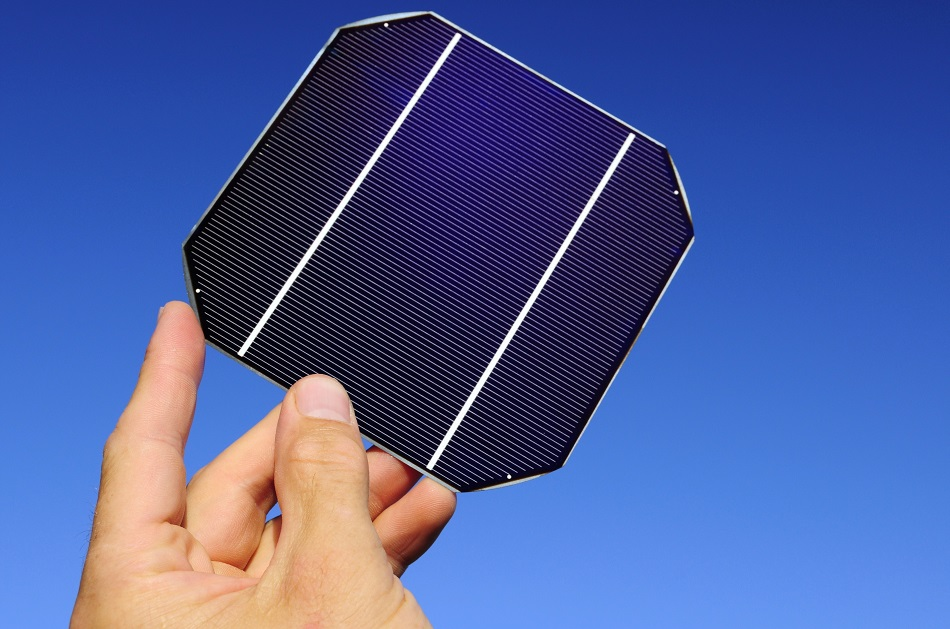Article updated on 14 December 2020.

Image Credit: neijia/Shutterstock.com
Photovoltaic (PV) materials are the subject of intensive study today, as a climate emergency is declared by national and local governments all around the world. As solar energy is one of the clean technologies that many hope will reduce anthropogenic damage to the earth and its ecosystems, the PV materials that make up solar cells are under intense scrutiny from a large and growing community of committed and motivated researchers.
One of the primary methods used to analyze PV materials is ultrafast infrared spectroscopy. Spectroscopy is the study of interactions between matter and electromagnetic radiation. The entire field of spectroscopy is essential for PV materials analysis, as it is concerned with the ways in which matter converts energy, similarly to the way the case in a PV cell converts solar to electrical energy).
Ultrafast spectroscopy uses ultrashort pulse lasers to study these dynamics of matter and electromagnetic radiation within extremely short time scales (attoseconds to nanoseconds). These lasers excite the specimen material in short pulses, which initiates the desired process in the material. The dynamics resulting from this process can then be measured. Lasers emitting infrared wavelength light sources are used in the study of PV materials with ultrafast spectroscopy.
One method of observing PV materials with ultrafast infrared spectroscopy combines two spectroscopy techniques: ultrafast two-dimensional infrared (2D IR) and visible pump-infrared probe (Vis-IR) spectroscopy. Comparing the results of the 2D IR and Vis-IR spectra in PV materials shows how close to the interfaces between a functionalized fullerene and the polymer in PV material charge transfer occurs (charge transfer is optimal closest to these interfaces).
Combining these two techniques, researchers were recently able to observe the movement of electrons in various PV materials. With this information, they discovered new possibilities for organic PV materials, which could be optimized by careful control of the morphology of the polymer and fullerene materials (Barbour, Hegadorn and Asbury, 2007).
Organic PV materials have also been subjected to ultrafast infrared spectroscopy examination to determine optimal charge transfer (CT) states. With the ability to closely monitor and record CT in organic PV materials, researchers have been able to identify optimal materials and even to fine-tune materials to ensure high yield (ability to convert solar energy into electricity) (Pensack, Hegadorn and Asbury, 2007). In the same study, researchers utilized ultrafast infrared spectroscopy to fine-tune selected organic materials and maximize the quantum yield of the PV.
Most recently, our knowledge about CT in PV materials – perhaps one of the most important elements of the material considering the fact it is a key determiner of quantum yield – has progressed further due to more advances in ultrafast spectroscopy. Transient reflectance or reflection (TR), transient photoreflectance or photoreflection (TPR) and transient infrared attenuated total reflection (TATR) are spectroscopy methods for analyzing quantum particle activity and therefore cover differences of only nanoseconds in time.
In 2019, researchers used these methods to gain further insight into how photons best convert into electrons in the PV CT. Using the latest ultrafast infrared spectroscopy techniques, it was possible to determine crucial PV material factors influencing the CT such as surface recombination velocity and carrier diffusion (Cheng, Wang and Beard, 2019).
Another recent example is the non-contact examination of potential thin film materials with which to create thin film PV. Ultrafast time-resolved THz spectroscopy (TRTS) has been used to compare spectra and charge carrier dynamics in the proposed film materials. Researchers in the US Government agency NIST (National Institute of Standards and Technology) stated that the development of this technique of ultrafast spectroscopy is important for comparing the end-product efficiency of solar panels (Lease, 2014).
References and Further Reading
- Barbour, L.W., Hegadorn, M. and Asbury, J.B. (2007). Watching Electrons Move in Real Time: Ultrafast Infrared Spectroscopy of a Polymer Blend Photovoltaic Material. Journal of the American Chemical Society, 129(51), pp.15884–15894.
- Chen, X., Wang, K. and Beard, M.C. (2019). Ultrafast probes at the interfaces of solar energy conversion materials. Physical Chemistry Chemical Physics, 21(30), pp.16399–16407.
- Lease, W. (2014). Photovoltaic Carrier Dynamics Measured by Time-Resolved Terahertz Spectroscopy. [online] NIST. Available at: https://www.nist.gov/programs-projects/photovoltaic-carrier-dynamics-measured-time-resolved-terahertz-spectroscopy.
- Pensack, R.D. and Asbury, J.B. (2011). Ultrafast probes of charge transfer states in organic photovoltaic materials. Chemical Physics Letters, 515(4–6), pp.197–205.
Disclaimer: The views expressed here are those of the author expressed in their private capacity and do not necessarily represent the views of AZoM.com Limited T/A AZoNetwork the owner and operator of this website. This disclaimer forms part of the Terms and conditions of use of this website.